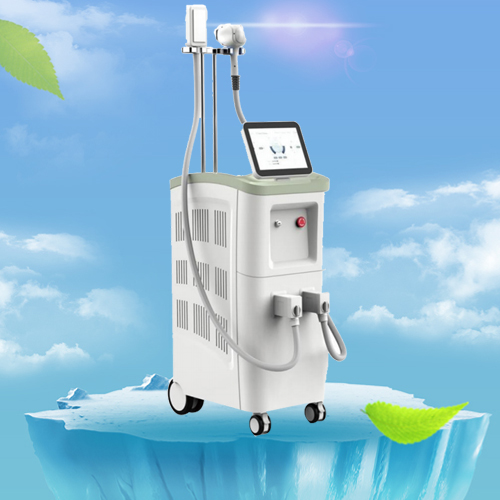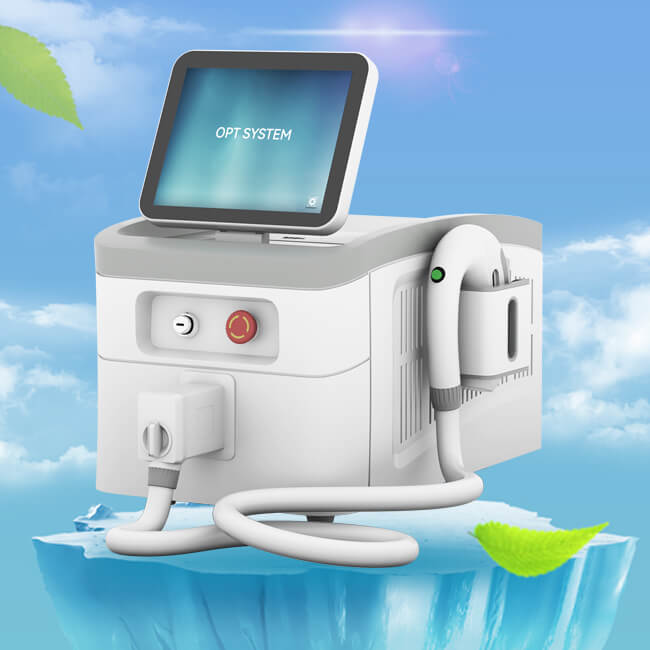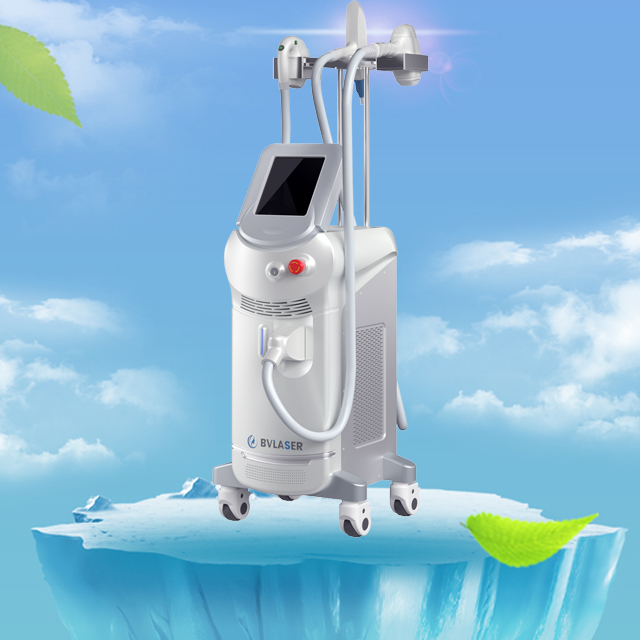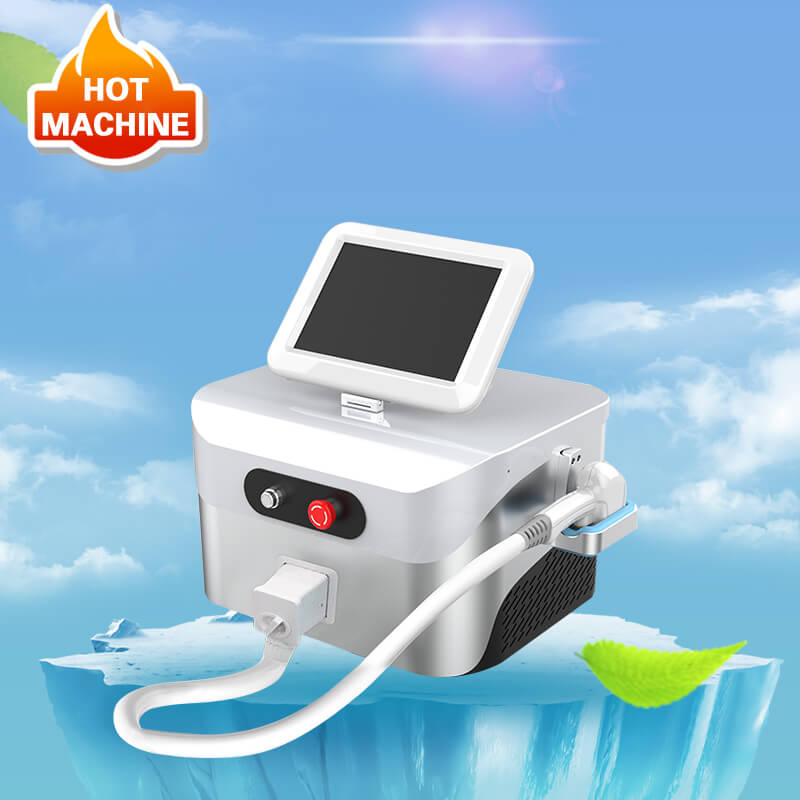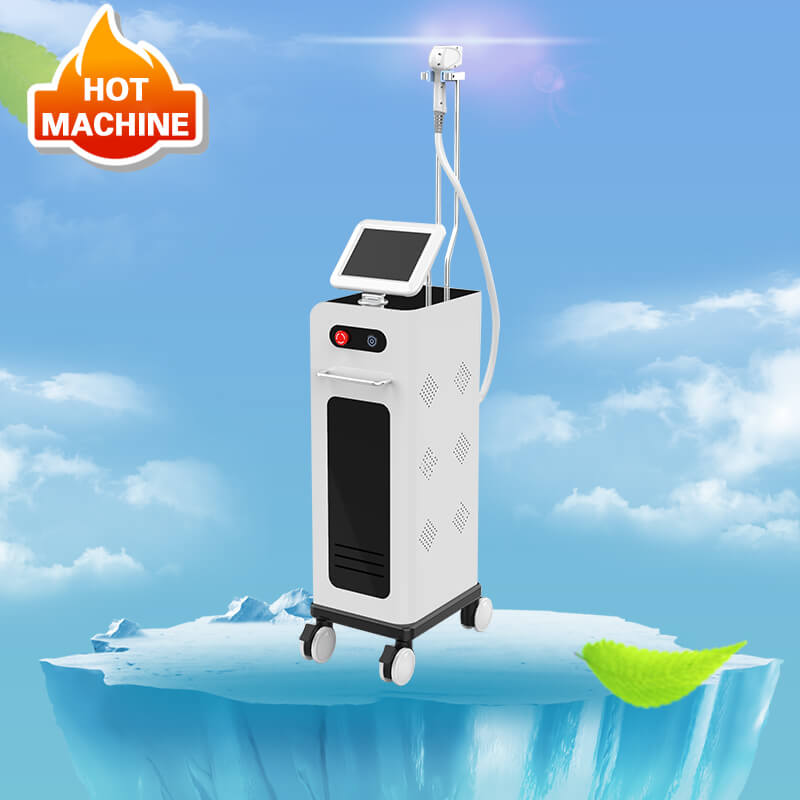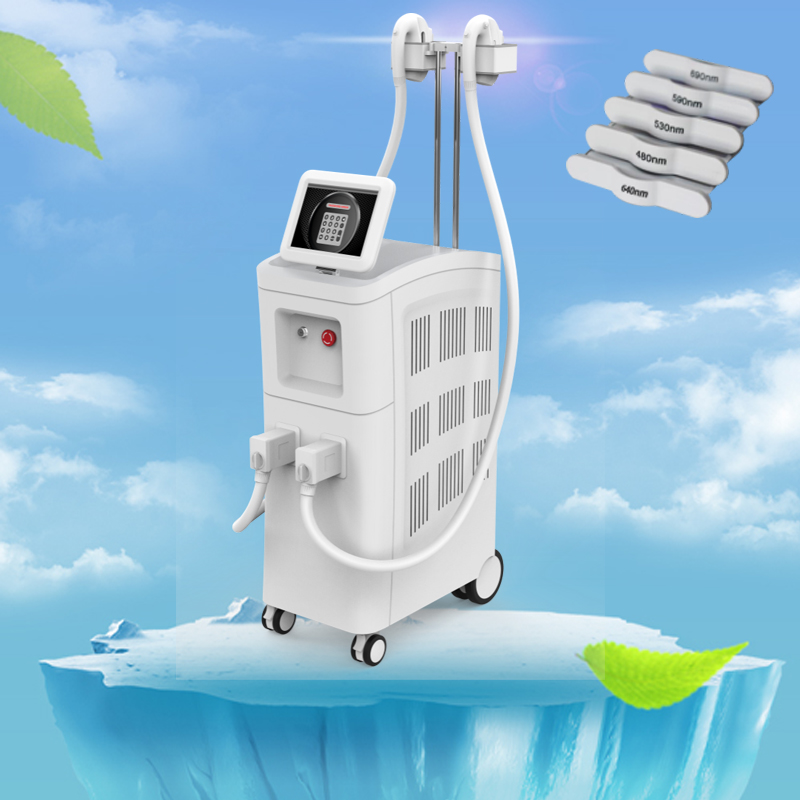Effects of picosecond laser on the multi-colored tattoo removal
Author:baishilf Time:2024-07-02 10:00:32
Discover the transformative potential of picosecond laser tattoo removal machine for your skin. This non-invasive laser treatment effectively targets pigment-related issues like sunspots, age spots, tattoo, and melasma. With its advanced technology, it can deliver impressive results, giving you a more even and radiant complexion. Bestview Laser is a China picosecond laser in laser beauty equipment, we have CE certification picosecond laser machine for sale.
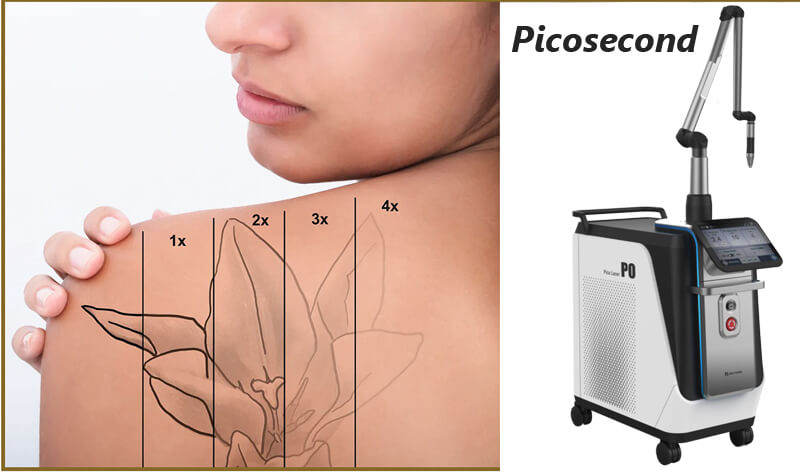
Effects of picosecond laser on the multi-colored tattoo removal
Picosecond lasers have emerged as the leading technology for tattoo removal due to their shorter pulse lengths. To clarify the features of picosecond lasers, we compared picosecond and nanosecond lasers in their ability to remove multi-colored tattoo in an animal model. We first compared a nanosecond Q-switched Nd:YAG laser with picosecond laser using a model. The colors in the tattoos included red, orange, yellow, green, blue, and black. Model were treated for one session with each type of laser. The clearance of pigmentation and local reactions were evaluated based on clinical photographic assessment, quantitative assessment using a colorimeter, histopathology, and electron microscopic examination before laser treatment, immediately after, and at 3 weeks after the treatment. Regardless of pulse duration, a 532 nm laser was the most effective in clearing red, orange, and yellow pigments, although the overall effect and safety was better with the picosecond 532 nm laser. A picosecond 755 nm laser demonstrated excellent efficacy in removing only green and blue pigments. A picosecond 1064 nm laser demonstrated some effects on non-black colored tattoos. In terms of safety, picosecond lasers produced less tissue injury than nanosecond lasers. Conclusively, picosecond lasers are more effective and safer than nanosecond lasers.
Tattoos have long been used to express an artistic perspective on the body. Like the Western countries, tattooing in Asian has been gaining popularity. The most common color used for tattoos is black. However, colorful tattoos that use multiple dyes have become increasingly popular. With the increasing popularity of tattoos, the demand for an effective method for tattoo removal, such as picosecond laser, has also increased. However, tattoo removal has become complicated due to the use of multiple colors in modern tattoos.
For decades, Q-switched lasers capable of delivering short pulses of laser energy in the nanosecond domain have been the optimal devices for selective removal of tattoos from the skin. Although the exact mechanism of laser tattoo removal is not completely understood, the theory of selective photothermolysis (SPTL) is believed to be the primary principle of laser tattoo removal. The pigments in a tattoo can be destroyed with minimal or no damage to the surrounding tissues by delivering a sufficient amount of energy to the target area in pulse durations that are equal to or less than the thermal relaxation time (TRT) of the target tissue. TRT is defined as the time required for the heated chromophore to dissipate half the absorbed heat into the surrounding tissues. Therefore, a shorter pulse length accelerates the disruption of the target chromophore by the laser beam while also reducing the risk of thermal injury to the surrounding tissues. These disrupted small particles are then easily removed by the host phagocytes and the lymphatic system.
Therefore, pulse durations that are shorter than the target area’s TRT are important in cosmetic laser treatments of pigmentation therapy. However, the range of nanosecond-domain pulse duration is still too long to completely break the tattoo ink into smaller particles. Most tattoo pigments have a TRT in the range of picoseconds since the size of tattoo particles ranges between 40–300 nm in vivo. The TRTs for carbon particles of 40, 100, 200, and 300 nm diameters are 19.12, 119.5, 478, and 1,060 ps, respectively, according to the TRT formula. Therefore, picosecond lasers with pulse lengths that most closely match the TRT of the tattoo pigment molecules have been recently introduced to improve the efficacy of tattoo removal. These picosecond pulses are expected to allow for the most effective delivery of thermal radiation to tattoo particles through more specific photothermal and photomechanical effects than do traditional nanosecond-domain lasers. They also have an additional effect of minimizing the collateral damage to the surrounding dermis and epidermis. Based on this theoretical background, we conducted a pre-clinical study using animal tattoo models to compare the efficacy and safety of picosecond laser with that of a conventional, nanosecond Q-switched Nd:YAG laser.
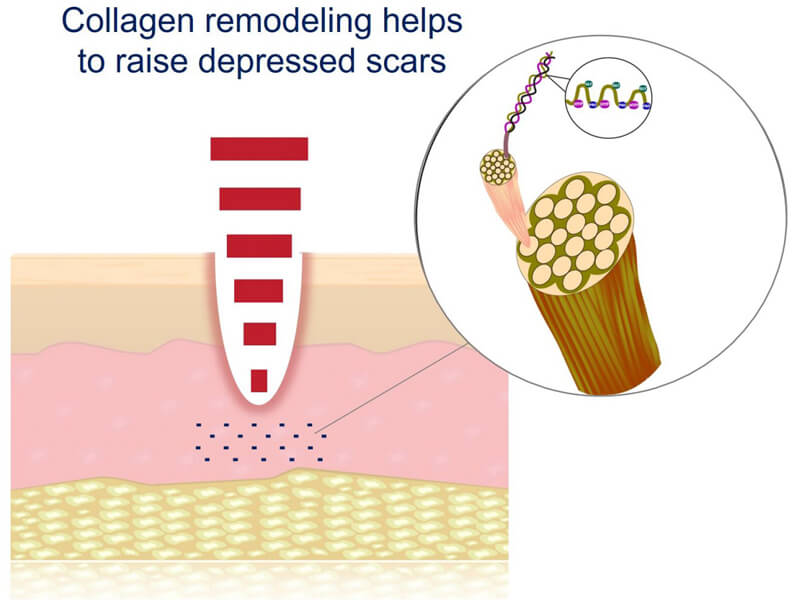
How many picosecond laser treatments do you need?
Picosecond laser technology uses light pulses compared to traditional laser treatments that tend to use heat. Picosecond means ‘one trillionth’ – imagine flicking a light switch off and on one trillion times within a second! That’s exactly what a picosecond means, which is the amount of light energy which enters the skin within a second. As the light ‘flicks’ off and on (light pulses) one trillion times within a second, it’s like a bunch of waves on the ocean cresting up and crashing down again. When the waves crash onto the shore, it creates shapes within the sand and can even break up dead pieces of coral into more sand particles. This is similar to what happens in the skin as well.
The picosecond pulses enter the skin and create a photomechanical impact known as a ‘pressure wave’. These pressure waves target areas in the skin (e.g. tattoo pigments or hyperpigmentations and scarring), which ‘squeezes’ those cells and causes them to shatter into fine particles. These particles are then eliminated by the body’s own immune system.
The picosecond laser can achieve the following:
1.Skin resurfacing on the face, neck, chest and hands for purpose of treating scarring, pigmentation or fine lines.
2.Tattoo removal
The experience for the procedures of these two purposes can be quite different in terms of the number of sessions needed, number of pulses used, and also in the intensity of the body’s response to treatment. We’ll go over those things, as we cover:
Picosecond Laser Treatments For Fine Lines and Wrinkles
Picosecond laser treatments can eliminate more than just pigments in the skin. As the laser pulses hit our skin layers, it also stimulates our skin cells to start healing again. Our skin has a natural tone to it. In areas where we say that our skin or muscles are toned, we can pinch up those tissues between our thumb and forefinger and our skin and muscle ‘snaps back’ to its initial position when we let go. If our skin isn’t toned, it might take a second or longer for our tissues to return to their initial position, that’s when we call our skin saggy, ‘crepey’, or has lost its tone. Other than doing exercises to build up muscle to regain back our tone, skin can also regain some of its tone through picosecond laser treatments.
Since picosecond laser treatments are non-ablative, meaning that they do not cause physical injury to the outermost skin’s surface (the stratum corneum), the lasers enter into the deeper layers of the epidermis and dermis according to the laser’s wavelength. This non-ablative laser exposure into the skin has been shown to result in the accumulation of microscopic epidermal necrotic debris (tiny, tiny, tiny dead skin cells) below the stratum corneum. What this means is that the formation of ‘dead’ skin cells in the skin layers caused by the laser helps to eliminate damage in the epidermal layer and facilitate regeneration by the rapid movement of the surrounding healthy skin cells (keratinocytes). Microscopical and histological studies which look at skin cells after they have undergone non-ablative laser therapy show that the skin epidermis cells restore after 3 days, dead skin cells completely exfoliate after 7 days, and new collagen regeneration begin after 3 months. What this means is that the skin surface will heal after 7 days, and collagen regeneration will continue for up to 3 months after treatment. You can expect a gradual reduction offine lines as collagen content improves.
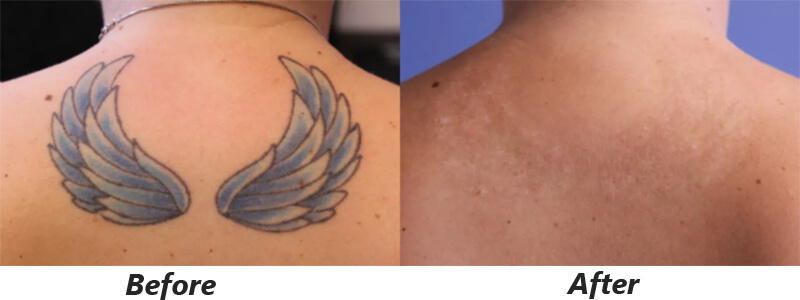
Number of picosecond laser treatment sessions
Wrinkle removal:
If you are not experiencing severe deep wrinkling, the picosecond laser can help fine lines and mild wrinkles within 2 to 3 treatment sessions to soften their appearance. If you have deeper wrinkles and sagging skin that need to be sorted out, treatments can be combined with other treatments such as Botox or face fillers.
Pigmentation removal:
Picosecond laser treatment works well for removal of skin pigmentation as the laser targets pigments in the skin. Pigments or spots of melanin in the skin are formed by melanocytes which can be triggered by things such as sun exposure or hormonal changes like pregnancy or menopause. When the topmost layer of skin is exposed to something which may cause damage such as UV rays, the melanocytes transfer melanosomes (little star-shaped cells that produce and store melanin) to the cells in the top skin layer where they form the melanin caps that reduce UV-induced DNA damage.
The picosecond laser helps to target those melanin caps which cause the hyperpigmentation, and break down the skin discoloration into tiny particles, oftentimes smaller than most other lasers. The smaller pigment particles, the faster they can be cleared off as well and results can be seen after a few sessions. Dark and dull spots will gradually fade away as the pigments are cleared off.
Pigmentation caused by sun damage, post-inflammatory hyperpigmentation (like spots after pimples or wounds have healed), melasma, freckles, and other skin discolorations may require 3 or 4 treatments to help fade them noticeably. Pigmentation which covers a larger area of skin or is quite severe may need more sessions.
Scarring removal:
Acne scarring can be a cause of frustration, especially atrophic acne scarring which can look like pits or depressions in the skin. The picosecond laser works in the same way for fine lines and wrinkles as for scarring, incurring your body’s natural healing response to stimulate collagen production which helps to repair and remodel the skin. A 3-dimensional analysis revealed an average of 24.3% improvement in scar volume which were maintained 3 months after treatment and histological analysis of skin tissue also showed elongation and increased density of elastic fibers and dermal collagen! The picosecond laser side effects of pain were only graded at an average of 2.83 out of 10, making it low on the pain scale. Acne scarring or scarring from injuries can be treated with extra pulses which may cause some redness in the skin. It is impossible to remove or erase 100% of scarring, but appearances can be greatly improved with an average of 4-6 sessions depending on the severity.
Tattoo removal:
Picosecond laser treatment was first used for tattoo removal treatments because it was found that the picosecond lasers were more effective at clearing away darker pigments than normal lasers. As the technology advanced, picosecond lasers were then refined for flaws on the skin. For some patients, the feeling of laser tattoo removal can be similar to how it feels when getting a tattoo, but over in a faster amount of time. Immediately after treatment, there may be some transient whitening or ‘frosting’ around the skin but will go off on its own once treatment is completed. Picosecond technology has been found to have good epidermal effect with rapid healing on coloured tattoo pigments, and a systematic review of picosecond lasers on tattoo removal showed that 69-100% of tattoos had over 70% pigment clearance after 1-10 laser treatments in humans. Depending on the ink type, colour, size of the tattoo, location on the body, the number of laser treatments needed will vary. Typically for smaller tattoos, 3-5 treatment sessions may be enough, but larger tattoos may need more sessions.
How quickly can you see results?
The results for picosecond laser treatment will not be immediate, and usually appear gradually for the next few weeks after treatment. That is why we usually have some time given in between treatments to allow for your skin to heal and regenerate. For most patients, visible results can be seen 2-3 weeks after the first session and will continue to improve until all treatment sessions are completed. It also depends on your age, skin condition, and skin cell turnover cycle.
Age and Skin Condition
Asian skin such as the skin types that we see have certain characteristics with picosecond laser treatment. The dermis in Asian skin tends to be thicker and more fibrous, which may account for a substantially lower incidence of fine wrinkles in East Asians compared to Caucasians. Hence, the main concern of Asian skin can usually be ‘wide pores’ and laser resurfacing using a picosecond laser can help these ‘wide pores’ or atrophic acne scarring that can be more prominent in Asian skin.
Mature skin also may take more time to see visible results. Younger patients who already have a greater baseline of more abundant collagen/elastin resources will be able to see results faster than those with mature skin.
Skin conditions which are heavily scarred or have deep wrinkles may also take more time to see results, for the same reasons of needing more time for collagen regeneration. Since the picosecond laser cannot completely erase scar tissue, you may also need to consider other treatment options to supplement your care such as Botox or face fillers.
All these factors can mean that it may take 3-4 weeks and more sessions to start seeing visible results compared to the general 2-3 weeks rule.
Skin Cell Turnover Cycle
Your skin cell turnover cycle also influences how quickly you start to see results. Although old skin cells start to shed off by the 2 week mark, it can take anywhere from 28 days to 40 days to fully shed off all the old cells and have a new set of skin! As long as you’re waiting for new healthy skin cells to slowly rise up to the top level of your skin, you may not yet see the results you want. Similarly, those with more mature or ageing skin may have long skin cell turnover cycles and those with more scar tissue can require more time for the surrounding skin cells to regenerate.
How long do results last?
You can typically enjoy the results of your picosecond laser treatment for at least 6 months with the appropriate skincare routine. After your final recommended treatment session, space out your maintenance sessions appropriately depending on your needs for good results!
Can results be permanent?
Yes! Results for scarring and tattoo removal are often permanent as old scar tissue and pigments do not come back once they are broken up and removed. For ageing concerns, results may not be entirely permanent since we cannot stop the ageing process. Over time, fine lines, sun spots, and wrinkles may appear again and require further skin rejuvenation.
How frequently should you have treatment?
This will depend on how long you see your results lasting. For acne scarring and tattoo removal, once the desired results are achieved there is usually no need for follow-up sessions. If you are treating fine lines, wrinkles, and pigmentation, it would depend on your skin condition and ageing process as well as lifestyle factors. When ageing happens, old cells can clutter your system which can contribute to signs of dryness and ageing. For some, a maintenance monthly session works, and some only need them every 2-3 months.
Your trusted skin care doctor is well-equipped to provide you with advice on how often you may need to come in for sessions, as well as how long until you may need a maintenance session. If you have any questions about picosecond laser, Bestview Laser can help you!






